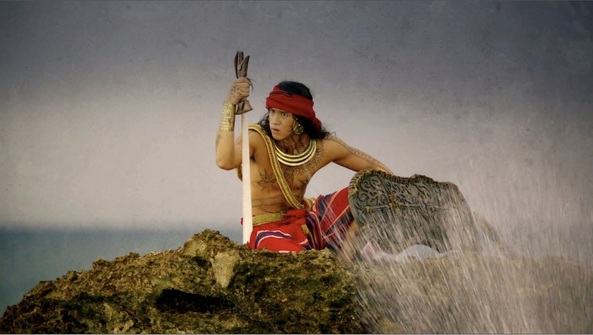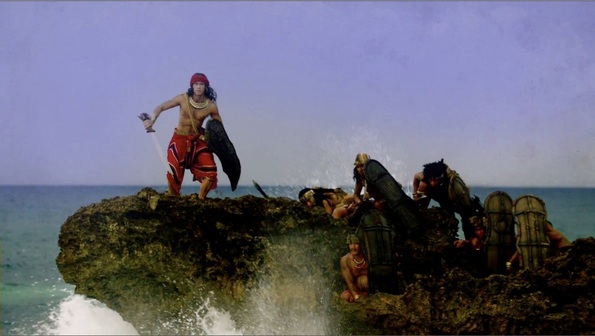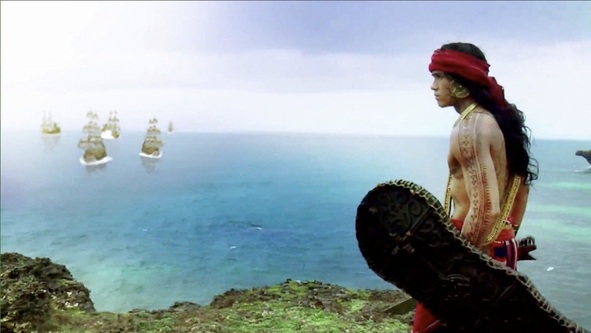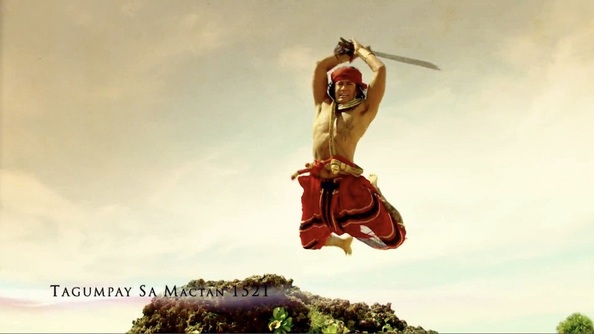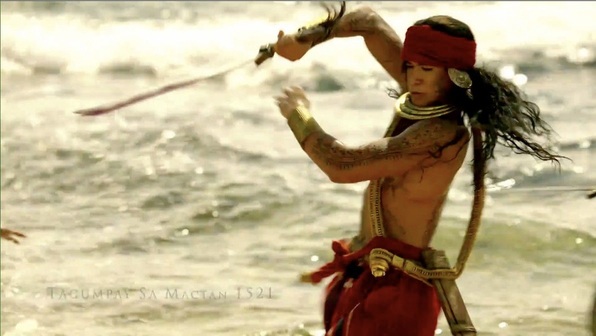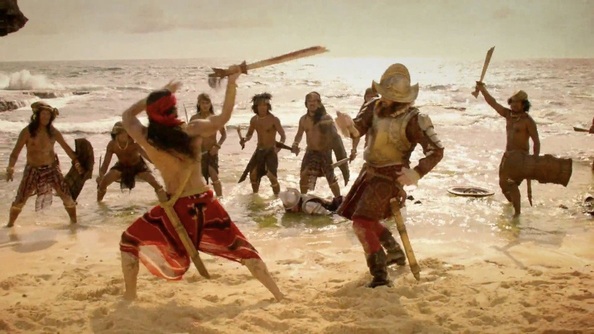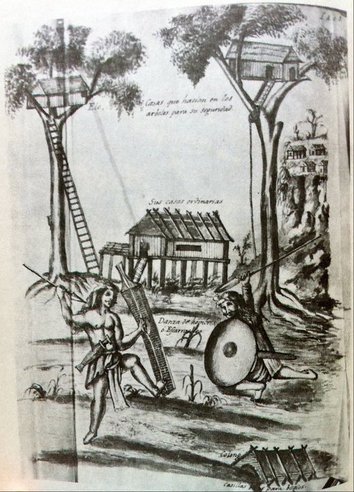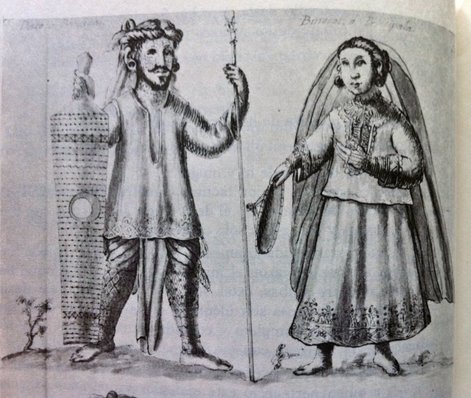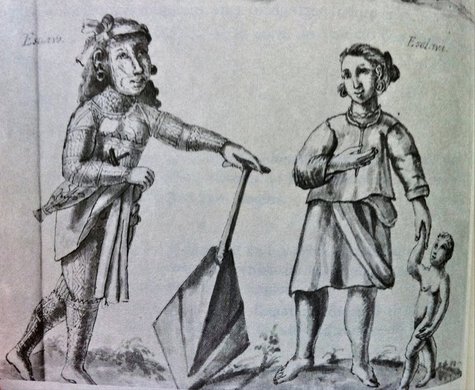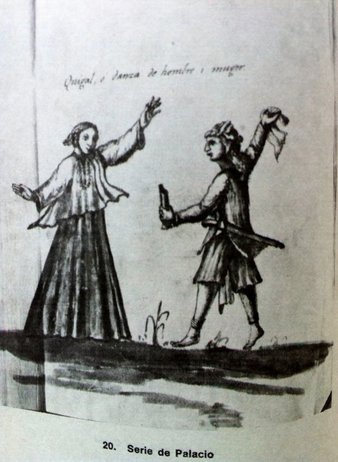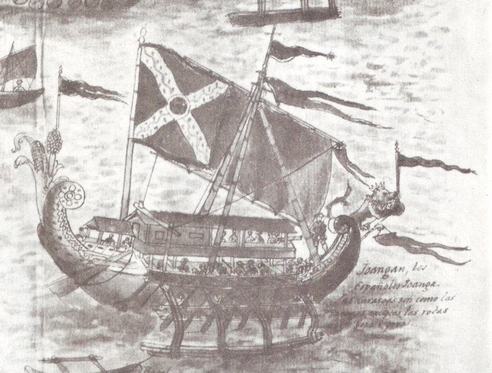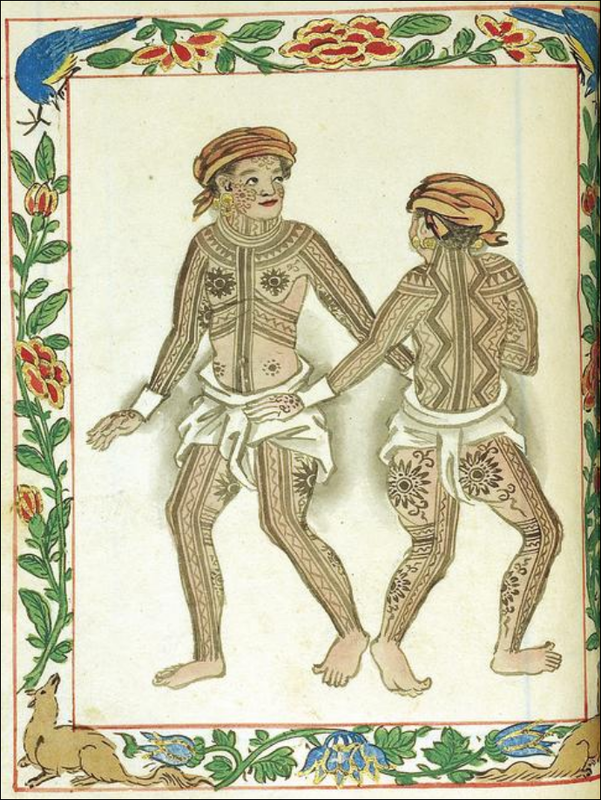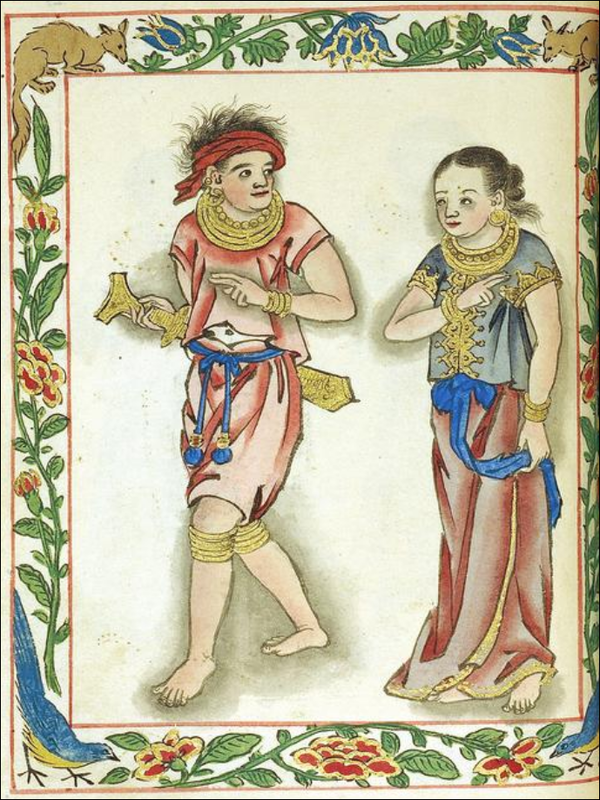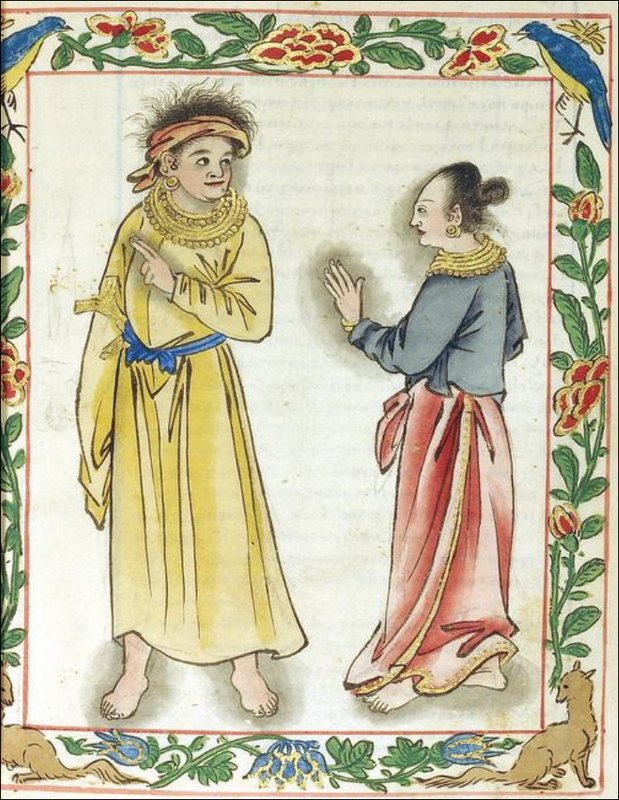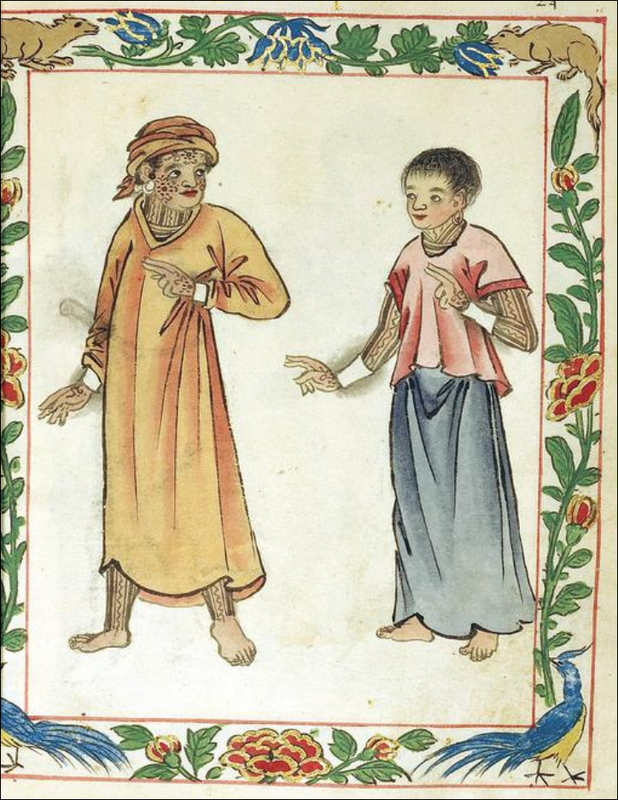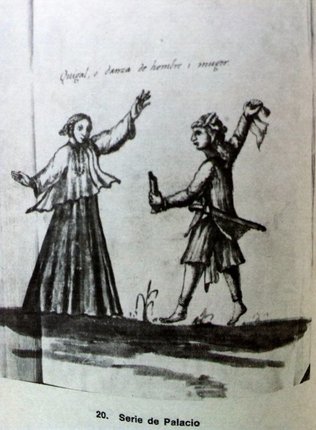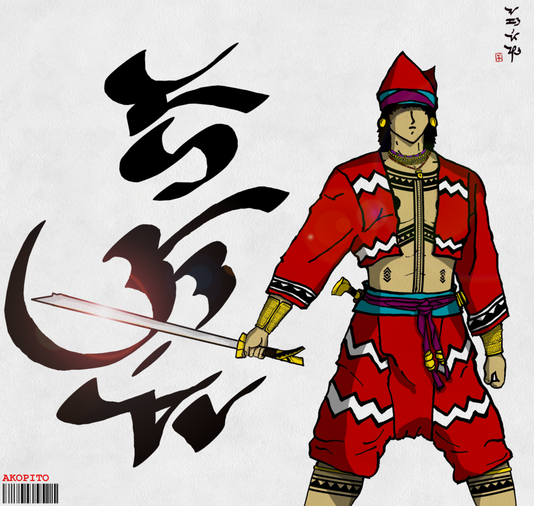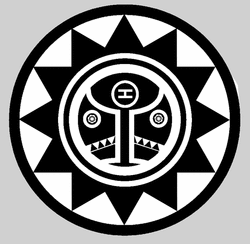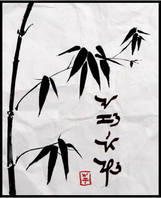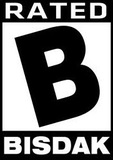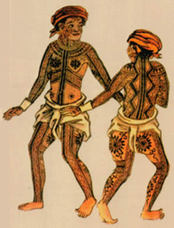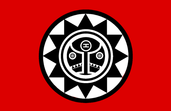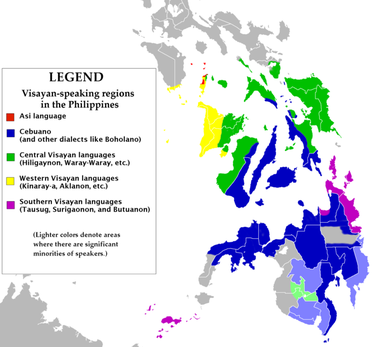
by Henry Funtecha, Ph.D.
When the Spaniards arrived in the Visayas in the 1520s (Magellan expedition) and the 1560s (Legaspi expedition), they widely used the term “Pintados” to refer to the inhabitants. Pintados means the “painted ones” due to the fact that the Bisayans were fond of decorating their bodies with tattoos, both men and women. Not fully understanding what tattoos were, the Spaniards thought the Bisayans indeed painted their bodies with artistic designs. The women had fine and intricate tattoos in their arms and their legs while the men, depending upon their exploits and contributions to the community, had tattoos all over their bodies. In some cases, especially for the brave and courageous ones who had proven their valor in battle, tattoos even covered their faces. The tattoo designs of men were generally of bold geometric patterns or representations of animals. It must be pointed out though that tattooing was not the monopoly of the Bisayans.
Early Spanish writers reported that natives of Albay, Camarines, Catanduanes, and the mountainous sections of northern Luzon also practiced it.
The question now is, at what point of time did the Spaniards begin to refer to the people of the Visayas as “Vizaya” or “Bisaya”? This is still a gray area with regards to the history of the Visayas but, looking at Spanish documents written by the late 1500s and early 1600s, the Spaniards had already shifted to the name “Vizaya” and were already referring to the central islands as “Las Islas de Visayas”. All indications point to the possibility that the name “Bisaya” was already in use prior to the coming of the Spaniards. What probably happened was that the early Spaniards were not yet familiar with the people and the places when they were just new in the country. So, for a while, they used the term “Pintados” but eventually shifted to the word “Vizaya” or “Bisaya” after they had already settled down in the area.
Another important consideration in trying to establish the usage of Bisaya in referring to the people is the fact that the Atis or Negritos of Panay have always been calling the lowlanders as “mga Bisaya”. In addition, there are lots of things in Panay referred to by the people as “bisaya”, like “bisaya nga manok, bisaya nga luy-a, bisaya nga kamatis, bisaya nga ahos, bisaya nga talong, bisaya nga pantat, and many more. The use of the term “Bisaya” is not just confined to local flora and fauna but is also used to refer to traditional processes like “bisaya nga pagpamulong” (use of herbal medicine) and “binisaya nga pamaagi”. Even using Hiligaynon and Kinaray-a in speaking is called “binisaya nga panghambal”. Is it possible also that “Bisaya” means native or local?
The other major issue pertains to the usage of the term “Bisaya” by the Cebuanos. They have expropriated the term as a designation exclusively for the Cebuanos and their language, with the exclusion of the other groups of Bisaya. To the Cebuanos, the other inhabitants of the Visayas are not Bisaya but as Ilonggos in Panay and Negros, Bol-anon in Bohol, and Waray in Samar and Northern Leyte. It is time for scholars and academicians to correct this misconception. The inhabitants of the Visayas are all Bisaya for this has been established as a fact by history.
The Spaniards recognized majority of the inhabitants of the Visayas as one race, except the Atis or Negritos. They generally described the Bisaya as of medium stature, having black hair and dark skin or kayumanggi. Some individual Spanish friars differed from these general characterization and referred to natives in a particular island as being taller, lighter in complexion, brave and more muscular than others, but these were subjective comments which reflected their value judgments and the fact that the Spaniards themselves varied greatly in stature and complexion, as well as physical traits.
The descriptions of the skin pigmentation of the Bisaya by the Spaniards in the 16th century were often contradictory (Scott 1995). The first natives the Spaniards observed were those from Homonhon, Limasawa, and Butuan, and were described by the colonizers as being of medium height and dark-skinned (Ibid).
Fr. Francisco Alcina, on the other hand, said that he did not think that the Bisayans were really that dark, though almost, and that the natives of Leyte and Samar were lighter than those in Davao (Alcina 1668). Alonso Mentrida, however, described the Bisaya “mailum” as a color a bit darker than kayumanggi, though not black like the Ati. From Cebu, Juan de la Isla reported that the natives were darker than the Indios of Mexico (Mentrida 1841).
Of course, it must be borne in mind that, as it is today, the Bisaya and the rest of the Filipinos are not at all of the same shade nor were they all necessarily darker than the Spaniards. In any case, before the development of a colonial mentality, the Bisaya themselves were not impressed by the pale color of the colonizers. In other words, they did not attach a premium on white skin and other features associated with the Caucasian race. The Spaniards were not even perceived as maputi or white, but as “mapuraw”, natural or undyed - meaning, untattooed. And to the Bisaya, because the Spaniards were not into the practice of chewing betel nut, the most distinctive character of these foreigners was their white teeth, a feature shared with animals like dogs, monkeys and pigs.
When the Spaniards arrived in the Visayas in the 1520s (Magellan expedition) and the 1560s (Legaspi expedition), they widely used the term “Pintados” to refer to the inhabitants. Pintados means the “painted ones” due to the fact that the Bisayans were fond of decorating their bodies with tattoos, both men and women. Not fully understanding what tattoos were, the Spaniards thought the Bisayans indeed painted their bodies with artistic designs. The women had fine and intricate tattoos in their arms and their legs while the men, depending upon their exploits and contributions to the community, had tattoos all over their bodies. In some cases, especially for the brave and courageous ones who had proven their valor in battle, tattoos even covered their faces. The tattoo designs of men were generally of bold geometric patterns or representations of animals. It must be pointed out though that tattooing was not the monopoly of the Bisayans.
Early Spanish writers reported that natives of Albay, Camarines, Catanduanes, and the mountainous sections of northern Luzon also practiced it.
The question now is, at what point of time did the Spaniards begin to refer to the people of the Visayas as “Vizaya” or “Bisaya”? This is still a gray area with regards to the history of the Visayas but, looking at Spanish documents written by the late 1500s and early 1600s, the Spaniards had already shifted to the name “Vizaya” and were already referring to the central islands as “Las Islas de Visayas”. All indications point to the possibility that the name “Bisaya” was already in use prior to the coming of the Spaniards. What probably happened was that the early Spaniards were not yet familiar with the people and the places when they were just new in the country. So, for a while, they used the term “Pintados” but eventually shifted to the word “Vizaya” or “Bisaya” after they had already settled down in the area.
Another important consideration in trying to establish the usage of Bisaya in referring to the people is the fact that the Atis or Negritos of Panay have always been calling the lowlanders as “mga Bisaya”. In addition, there are lots of things in Panay referred to by the people as “bisaya”, like “bisaya nga manok, bisaya nga luy-a, bisaya nga kamatis, bisaya nga ahos, bisaya nga talong, bisaya nga pantat, and many more. The use of the term “Bisaya” is not just confined to local flora and fauna but is also used to refer to traditional processes like “bisaya nga pagpamulong” (use of herbal medicine) and “binisaya nga pamaagi”. Even using Hiligaynon and Kinaray-a in speaking is called “binisaya nga panghambal”. Is it possible also that “Bisaya” means native or local?
The other major issue pertains to the usage of the term “Bisaya” by the Cebuanos. They have expropriated the term as a designation exclusively for the Cebuanos and their language, with the exclusion of the other groups of Bisaya. To the Cebuanos, the other inhabitants of the Visayas are not Bisaya but as Ilonggos in Panay and Negros, Bol-anon in Bohol, and Waray in Samar and Northern Leyte. It is time for scholars and academicians to correct this misconception. The inhabitants of the Visayas are all Bisaya for this has been established as a fact by history.
The Spaniards recognized majority of the inhabitants of the Visayas as one race, except the Atis or Negritos. They generally described the Bisaya as of medium stature, having black hair and dark skin or kayumanggi. Some individual Spanish friars differed from these general characterization and referred to natives in a particular island as being taller, lighter in complexion, brave and more muscular than others, but these were subjective comments which reflected their value judgments and the fact that the Spaniards themselves varied greatly in stature and complexion, as well as physical traits.
The descriptions of the skin pigmentation of the Bisaya by the Spaniards in the 16th century were often contradictory (Scott 1995). The first natives the Spaniards observed were those from Homonhon, Limasawa, and Butuan, and were described by the colonizers as being of medium height and dark-skinned (Ibid).
Fr. Francisco Alcina, on the other hand, said that he did not think that the Bisayans were really that dark, though almost, and that the natives of Leyte and Samar were lighter than those in Davao (Alcina 1668). Alonso Mentrida, however, described the Bisaya “mailum” as a color a bit darker than kayumanggi, though not black like the Ati. From Cebu, Juan de la Isla reported that the natives were darker than the Indios of Mexico (Mentrida 1841).
Of course, it must be borne in mind that, as it is today, the Bisaya and the rest of the Filipinos are not at all of the same shade nor were they all necessarily darker than the Spaniards. In any case, before the development of a colonial mentality, the Bisaya themselves were not impressed by the pale color of the colonizers. In other words, they did not attach a premium on white skin and other features associated with the Caucasian race. The Spaniards were not even perceived as maputi or white, but as “mapuraw”, natural or undyed - meaning, untattooed. And to the Bisaya, because the Spaniards were not into the practice of chewing betel nut, the most distinctive character of these foreigners was their white teeth, a feature shared with animals like dogs, monkeys and pigs.
